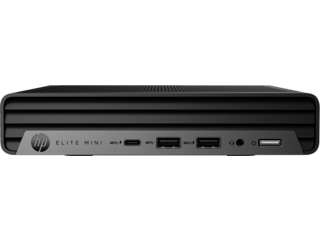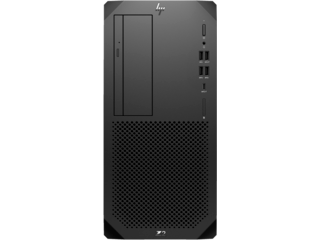In the past, the Thunderbolt and USB standards were entirely separate, leading to confusion and frustration over ports, plugs, and cables. Thankfully, with the creation of USB-C and Thunderbolt 3 technology, the two are now largely interchangeable.
USB-C cables are compatible with Thunderbolt ports, and USB-C ports are compatible with Thunderbolt cables. Thunderbolt technology plays a pivotal role in this evolution, offering unparalleled data transfer speeds, power delivery, and multi-display support, bridging the gap between Thunderbolt and USB-C with its advanced capabilities.
This makes it easier than ever to use the best cable you have available. However, it’s important to understand the key differences between Thunderbolt and USB-C so that you can make the right purchasing decision for your needs.
In this guide, we’ll take a look at Thunderbolt 3 vs USB-C and what makes them different.
What is USB-C?
USB-C, the most modern version of the universal serial bus (USB) standard, stands out from earlier USB types like USB-A with its oval shape and ease of connection. Unlike its predecessors, USB-C is small enough to work with smartphones and other compact devices. The USB-C connector is symmetrical, eliminating the hassle of plug orientation and marking a significant advancement in design and functionality. Its adoption across various tech devices for charging, data transfer, and display connectivity highlights its capabilities in transmitting data and power efficiently.
USB-C data transfer speeds
- USB-C plugged into a USB 3.1 port: Up to 10 Gbps
- USB-C plugged into a USB 3.2 port: Up to 20 Gbps
It’s important to note that these speeds are theoretical maximums, and actual transfer rates may vary depending on factors such as the devices being used and the quality of the cable. For optimal performance, consider using a high-quality USB-C cable that’s specifically designed for fast data transmission.
USB-C charging speeds
By default, a USB-C cable provides 2.5 watts of power. However, many devices use the Power Delivery protocol, which allows a USB-C cable to deliver up to 100 watts. The speed at which a device charges with USB-C ultimately depends on whether it is plugged into a USB 3.1, USB 3.2, or Thunderbolt 3 port. USB-C’s fast charging capabilities have made it a popular choice for powering a wide range of
devices, from smartphones to laptops.
What is Thunderbolt?
Thunderbolt is a technology that launched in 2011 through a collaboration between Intel and Apple, introducing the thunderbolt connection for high-speed data transfer and enhanced interoperability between a
computer and external peripherals like hard drives and monitors. Initially only compatible with the MacBook Pro, Thunderbolt 3 universalized the technology and made it compatible with USB-C, significantly expanding the range of thunderbolt devices. These devices benefit from faster transfer speeds, bidirectional data transfer, and the ability to daisy chain multiple devices without the need for separate power sources, thereby minimizing clutter and expanding usability.
Thunderbolt 4
The latest iteration, Thunderbolt 4, improves on the standards of Thunderbolt 3, including:
- Ability to daisy-chain two 4K monitors or support a single 8K monitor
- A Thunderbolt 4 cable has data transfer speeds up to 3,000 MB/s (double the minimum of Thunderbolt 3)
- Intel VT-d-based direct memory access (DMA) protection
- Mandatory PC charging on at least one computer port
- Wake computer from sleep by touching keyboard or mouse when connected to Thunderbolt dock
- Required Intel certification for all computers, accessories, and cables
Thunderbolt cost considerations
As a proprietary Intel technology, Thunderbolt tends to be more expensive than USB-C. Devices with Thunderbolt ports also generally cost more. However, a USB-C port allows Thunderbolt cables to connect in all instances, making it a more universally compatible option.
Thunderbolt data transfer speeds
A Thunderbolt 3 cable can transfer up to 40 Gbps, twice the maximum of USB-C. However, these speeds are only possible when using a Thunderbolt cable with a Thunderbolt port, not a USB-C port. This is because Thunderbolt 3 uses two lanes of PCIe 3.0 for data transfer, while USB-C uses one lane of PCIe 3.0 or two lanes of PCIe 2.0.
The increased speeds are important for enhanced performance in activities like
gaming and virtual reality. Thunderbolt’s faster data transfers mean peripherals like mice, keyboards, and VR headsets can respond quicker, providing a competitive advantage and decreased lag.
For optimal performance with your Thunderbolt setup, consider using a high-performance SSD for faster data transfer and improved system responsiveness.
Thunderbolt charging speeds
A Thunderbolt 3 cable charges devices at 15W by default. But with the Power Delivery protocol, it can charge at up to 100W, the same as USB-C. For charging most devices including
laptops, Thunderbolt 3 will provide virtually identical speeds to USB-C. However, Thunderbolt 4 requires PC charging on at least one port, whereas USB-C charging is optional.
Thunderbolt ports and docks
While USB-C and Thunderbolt ports are universal, Thunderbolt offers some standout features:
- Ability to connect multiple external 4K monitors
- Support for Thunderbolt expansion docks
A Thunderbolt dock lets you connect a single cable to a Thunderbolt port and then provides various other ports like Ethernet, HDMI, USB, and audio jacks, including an ethernet port for expanded connectivity options and an HDMI port that supports dual displays with high-resolution streaming or mirroring at 4K@60Hz. Thunderbolt cables are compatible with USB-C ports, but not every USB-C port supports Thunderbolt. Look for the Thunderbolt lightning symbol to confirm.
6 Months Special Financing
12 Months Special Financing
24 Months Special Financing
On purchases of $200 or more with the HP Credit Account*
Buy now, pay later†
Perfect for accessories & budget tech
Fast approval process
Basic Student Tech
Purchases of $200 or more
On purchases of $750 or more with the HP Credit Account*
Buy now, pay later†
Great for laptops & mainstream computers
Fast approval process
College Essentials
Purchases of $750 or more
On purchases of $2,500 or more with the HP Credit Account*
Buy now, pay later†
Ideal for premium & gaming systems
Fast approval process
Power Users & Gamers
Purchases of $1,500 or more
Should you choose Thunderbolt or USB-C?
For most users, USB-C is more than capable of handling typical needs for connecting accessories, storage devices, and charging. However, Thunderbolt is the better choice if you need to:
- Transfer very large amounts of data quickly
- Daisy-chain multiple 4K monitors and connect multiple devices, emphasizing the ability to streamline setups with fewer cables
- Use Thunderbolt docking stations
- Connect numerous peripherals for gaming or other demanding tasks
Daisy-chaining not only supports high-resolution displays but also allows you to connect multiple devices in a series using a single Thunderbolt cable, significantly reducing clutter on your workspace. This is especially useful for creative professionals who use multiple displays and storage devices.
Thunderbolt excels at rapidly transferring large files like videos to external drives, useful for data backups and video editing workflows. Its ability to drive multiple 4K displays also provides a higher video bandwidth, making it ideal for graphic design and 3D modeling.
However, Thunderbolt’s added capabilities come at a price premium, and most budget PCs and devices do not include Thunderbolt support. Consider if the benefits are worth the extra cost for your specific needs. If you primarily use your computer for basic tasks like web browsing, email, and document editing, USB-C will likely suffice.
HP Thunderbolt Docking Stations
If you decide Thunderbolt is right for you, HP offers several powerful and versatile Thunderbolt docks. These docks are compatible with a wide range of thunderbolt device types, showcasing the versatility of Thunderbolt technology in connecting Thunderbolt™ devices to non-Thunderbolt computers and bridging the gap between different generations of Thunderbolt specifications.
- HP Thunderbolt Dock 120W G2: Supports up to two 4K displays, 85W charging, and 11 ports including HDMI 2.0, DisplayPort, Thunderbolt 3, and USB-C
- HP Elite Thunderbolt 3 65W Dock: Slim, powerful dock with 65W charging and extensive port options
- HP ZBook Thunderbolt 3 Dock: Provides 200W charging, dual 4K display support, and enhanced security features for HP ZBook mobile workstations
Summary
In the Thunderbolt vs USB-C debate, the choice largely comes down to your specific needs and budget. Most
laptops feature USB-C ports, which capably handle common connectivity and charging tasks.
About the Author
Daniel Horowitz is a contributing writer for HP Tech Takes. Daniel is a New York-based author and has written for publications such as USA Today, Digital Trends, Unwinnable Magazine, and many other media outlets.
Popular HP Docking Stations:


















